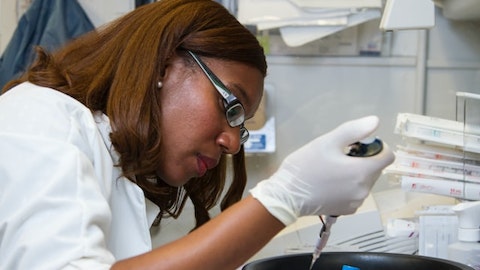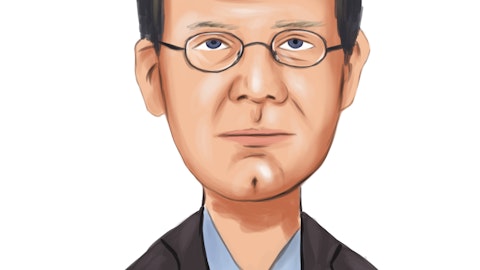Antony Koblish: Thank you. Yes. So we’re about 60% revenue within our GPO partners. Our target for this year is to be around 70%. We think that’s very, very attainable. And if you look at the longest tenured GPO, health trust, and particularly the subset of health trust known as HCA, we may have about a 30% to 35% market share within that organization, within hernia. So I think given time, pressure, addition of clinical data, maturity of our commercial structure and team that we’re slowly proving that we can penetrate into GPOs over the long haul. Obviously, we’ve had the longest start with HCA and health trust, but we should be able to continue that march through the other GPOs. We are in the process of working through contracting for LIQUIFIX to get access to that product and then also other GPOs are going to be coming up for contract late this year.
So in addition to focusing mostly this year on implementation and growth within the footprint we have, we also keep our eye on the further processes involved in getting more contracts. We’re very confident that not only will the number of contracts grow, but our penetration will grow as well.
Caitlin Cronin: Awesome. And then just on LIQUIFIX, since the current indication is for polypropylene and polyester mesh, will you be pursuing an indication for use with your ovine based mesh?
Antony Koblish: Absolutely, yes, very, very good reading defined print on that one. Thank you. Yes, so what’s powerful about LIQUIFIX is that it is hyper-aligned with inguinal to start, and it’s very much a product that is going to be used with the vast majority of the inguinal meshes used today, that is to say polypropylene and polyester. So it’s going to give us the ability to interact with surgeons who do not use our products today and it’s going to give us a tremendous entry point and platform to present our new IHR portfolio, our whole hernia portfolio, really. And so I think it’s going to be a very important driver of the hernia franchise for this year. And then as the contracting, et cetera, starts to come into play, as this year goes forward and through next year, I think LIQUIFIX itself will start to become an excellent contributor in the business as well.
So there’s a couple things that have to happen that we have our eye on working with AMS, who’ve been a tremendous partner so far in the launch phase, very much participating with us in the rollout here at the national sales meeting. One is expanding indication to things like ventral hernia, and two is expanding indication to our product and biologic products. In Europe, LIQUIFIX has been used for several years. There’s hundreds of thousands of procedures that are done with it. It’s a very good learning curve and tips and pearls for us to tap into. There’s a published paper, one of the surgeons out of the UK, Mr. Wilson, has done hundreds of cases of LIQUIFIX in combination with all biologic products, including our products. So we know that it works.
We just have to do the work to drive the expansion of indications and different products. That said, there’s more than enough to work with the LIQUIFIX label that we have now, since most inguinals are repaired with synthetic mesh and it’s a great door opener for us as well.
Caitlin Cronin: Awesome. Thanks so much for taking the questions.
Roberto Cuca: Thanks, Caitlin.
Operator: Thank you. [Operator Instructions] And our next question is going to come from the line of Michael Sarcone with Jefferies. Your line is open. Please go ahead.
Michael Sarcone: Good afternoon and thanks for taking my questions.
Antony Koblish: Thank you.
Michael Sarcone: Just on the sales incentive programs, you talked about how there are synergies, excuse the background noise, when you can get a rep selling more than one product into accounts and I think you said it could be three to four, not one plus one and two. I was wondering if you can give us a little more color on what proportion of the sales force today is kind of selling one product versus two, or just any kind of split for sales force and where that could ultimately go over time?
Antony Koblish: Thanks for the question, Mike. So pretty much all of our sales reps today are selling some of each product. What I’d say is that those who are selling close to balanced selling, what we’re trying to achieve with the incentive program represent probably about a third of our sales force. So if we can move the other two-thirds of the sales force to something closer. We believe that that dynamic of the one plus one equaling three to four will benefit the whole portfolio. So we’re not going to put in place incentives that require them to jump from selling, let’s say 5% PRS or 5% hernia to 50-50 immediately, but we’re putting in a plan that will gradually grow them, incentivize them to grow to much more balanced selling, something that will look more similar to the breakdown between the two products across our portfolio.
Michael Sarcone: Got it. That’s helpful. Thank you. And then just second question from me, just on cash burn, can you talk about how you expect cash to trend through the year?




